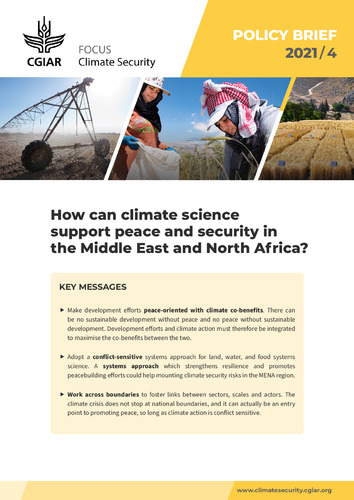How can climate science support peace and security in the Middle East and North Africa?
The Middle East and North Africa (MENA) region is of the most volatile and conflict-affected regions in the world, and is also highly vulnerable to climate-related risks. The region faces climate vulnerability from droughts, increasing temperatures and rainfall variability, with adverse effects on agricultural and livestock production. While various parts of its regional fabric are tied by common culture, language, religion, and colonial histories, there are diversities in political economic institutions and development outcomes. With economies usually dependent on rainfed agriculture or fossil fuels, the MENA region continues to face serious challenges, including with water, energy, and food insecurity, an over-reliance on food imports, intensifying conflicts, and knock-on effects such as large-scale population movements. In parts of the region where fossil fuels dominate, key elements of development are affected by increasing global pressure due to the growing push for low-carbon economies. In this context, unequal development outcomes can act both as a driver as well as an outcome of intra- and inter-state conflicts.

